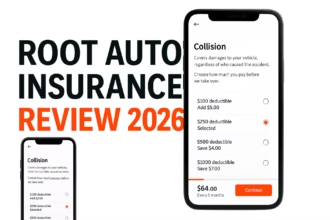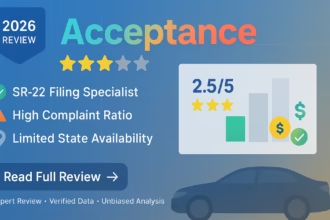
Why Most Americans Overpay for Insurance (And How to Stop)
If you’re among the 73% of Americans who haven’t shopped for insurance in the past year, you’re likely paying hundreds more than necessary. Recent data shows that drivers who compare rates save an average of $416 annually, while homeowners save up to $1,200 just by understanding how premiums are calculated.
The insurance industry processes over $1.4 trillion in premiums annually, yet most consumers remain unaware of how their rates are determined. This lack of transparency results in American families incurring approximately $40 billion in overpayments each year.
The Hidden Truth About Insurance Premium Calculations
Insurance companies don’t randomly assign your rates. Behind every premium is a sophisticated algorithm analyzing hundreds of data points to predict your likelihood of filing a claim and the potential cost of that claim. Understanding this process is your key to unlocking significant savings.
What Is an Insurance Premium?
An insurance premium is the amount you pay for coverage, but it’s calculated through a complex risk assessment formula that most insurers keep proprietary. However, the fundamental principles remain consistent across the industry.
The Core Factors: How Insurance Companies Calculate Your Premium
1. Risk Assessment: The Foundation of Premium Calculation
Insurance companies employ actuaries who use statistical models to evaluate risk based on two primary factors:
- Frequency: How likely are you to file a claim?
- Severity: How much will that claim cost?
Image placement: Insert infographic showing risk assessment process here
2. Personal Risk Factors That Impact Your Premium
For Auto Insurance:
- Driving Record: Each traffic violation can increase premiums by 10-40%
- Age and Experience: Drivers under 25 pay 50-100% more than experienced drivers
- Credit Score: Poor credit can increase rates by up to 115% in states where it’s allowed
- Vehicle Type: Luxury cars cost 25-50% more to insure than economy vehicles
- Location: Urban areas see 15-30% higher rates due to increased accident and theft risk
For Home Insurance:
- Home Age and Construction: Homes built before 1970 face 15-25% higher premiums
- Location Hazards: Properties in flood-prone areas see 200-400% increases
- Credit History: Can impact rates by 20-50% in most states
- Claims History: Previous claims increase premiums for 3-7 years
- Coverage Limits: Higher coverage typically reduces per-dollar costs
READ ALSO: Cheapest Homeowners Insurance Companies in 2025: A Comprehensive Guide to Saving Thousands
The Premium Calculation Process: Inside the Black Box
Step 1: Base Rate Determination
Insurance companies start with a base rate calculated using actuarial data from millions of similar policies. This rate represents the average cost per unit of coverage for someone with your general profile.
Step 2: Individual Risk Modifiers
Your personal factors are then applied as multipliers to the base rate:
| Factor | Potential Impact on Premium |
| Excellent Credit (750+) | -15% to -25% |
| Poor Credit (Below 600) | +25% to +115% |
| Clean Driving Record | -10% to -15% |
| Multiple Violations | +40% to +200% |
| High-Risk Location | +15% to +400% |
| Safety Features/Discounts | -5% to -25% |
Step 3: Coverage Selection Impact
Your chosen deductibles and coverage limits directly affect your premium:
- Higher Deductibles: Can reduce premiums by 10-40%
- Lower Coverage Limits: Reduce premiums but increase financial risk
- Additional Coverage: Each add-on typically increases premiums by 5-15%
Regional Variations: How Location Affects Premium Calculations in the USA
State-by-State Premium Variations
Insurance costs vary dramatically across the United States due to state regulations, weather patterns, and local risk factors:
Highest Cost States (Average Annual Premium):
- Michigan: $2,878 (auto)
- Florida: $2,308 (home)
- Louisiana: $2,339 (home)
Lowest Cost States:
- Maine: $965 (auto)
- Utah: $1,123 (home)
- Vermont: $1,207 (home)
Urban vs. Rural Premium Differences
Metropolitan areas consistently show higher premiums:
- Auto Insurance: Urban rates average 25-40% higher
- Home Insurance: City premiums typically exceed rural rates by 15-25%
Industry Factors: External Forces Affecting Everyone’s Premiums
Current Market Pressures (2024-2025)
Several industry-wide factors are driving premium increases across the USA:
- Inflation Impact: Construction and auto repair costs increased 12-18% in 2024
- Climate Change: Weather-related claims rose 40% over the past decade
- Technology Costs: Advanced vehicle systems increase repair expenses by 30-50%
- Supply Chain Issues: Parts shortages extend repair times and costs
- Reinsurance Costs: Insurers’ own insurance costs rose 25-30% in 2024
Proven Strategies to Lower Your Premium Calculations
Immediate Actions (Can Save 10-30%)
- Shop and Compare: Rates vary by up to 300% between insurers
- Bundle Policies: Save 5-25% by combining auto and home insurance
- Adjust Deductibles: Increase deductibles to reduce premiums by 10-40%
- Review Coverage: Remove unnecessary coverage or adjust limits
Long-term Strategies (Can Save 15-50%)
- Improve Credit Score: Each 50-point increase can save 5-10%
- Maintain Clean Records: Avoid claims and violations when possible
- Install Safety Features: Security systems, dashcams, and safety devices
- Consider Usage-Based Insurance: Save up to 30% with telematics programs
Professional Optimization
Work with independent agents who can:
- Compare rates across 10-20 insurers instantly
- Identify discounts you might miss
- Optimize coverage for your specific situation
- Monitor rate changes and re-shop automatically
Common Premium Calculation Mistakes That Cost You Money
Mistake #1: Loyalty Penalties
Staying with the same insurer for over 3 years often results in higher rates. Insurers typically offer their best rates to new customers, gradually increasing premiums for existing policyholders.
Mistake #2: Under-utilizing Discounts
The average American qualifies for 7-12 insurance discounts but only claims 2-3. Common missed discounts include:
- Multi-policy bundling (5-25% savings)
- Professional associations (5-15% savings)
- Safety course completion (5-10% savings)
- Low mileage driving (10-25% savings)
Mistake #3: Inadequate Coverage Reviews
Life changes affect premium calculations. Major events requiring coverage updates include:
- Marriage or divorce
- Home purchases or improvements
- New vehicles
- Job changes
- Credit score improvements
The Future of Premium Calculations: What’s Changing
Technology Integration
Insurance companies are incorporating new data sources:
- Telematics: Real-time driving data affects 15% of auto policies
- Smart Home Data: IoT devices may influence home insurance by 2026
- AI Underwriting: Machine learning improves risk assessment accuracy
Regulatory Changes
Recent state-level changes affecting premium calculations:
- Credit Score Restrictions: Several states limiting credit score usage
- Gender Rating Bans: Some states prohibiting gender-based pricing
- Transparency Requirements: Increased disclosure of rating factors
Taking Action: Your Premium Optimization Checklist
Immediate Steps (Complete This Week)
- Gather current policy documents
- List all vehicles and properties needing coverage
- Document recent life changes
- Research your current credit score
- Compile driving records for all household drivers
Comparison Shopping (Complete This Month)
- Get quotes from at least 3-5 insurers
- Compare identical coverage levels
- Evaluate customer service ratings
- Review financial strength ratings
- Calculate total annual costs, including fees
Optimization Actions (Ongoing)
- Set annual rate review reminders
- Monitor credit score improvements
- Track and maintain clean driving records
- Update coverage for life changes
- Review and utilize available discounts
Conclusion: Take Control of Your Insurance Costs Today
Understanding how insurance companies calculate your premium puts you in control of your insurance costs. With premiums rising 5-15% annually across most states, the cost of inaction grows daily. The strategies outlined in this guide can save the average American household $400-1,200 annually on insurance costs.
Remember: Insurance rates change constantly based on market conditions, your personal profile updates, and competitive pressures. What was competitive six months ago may now be overpriced by 20-30%.
The most important step is the first one. Start your comparison today – most people complete the process in under 10 minutes and see their potential savings immediately.
Last Updated: July 2025 | Sources: National Association of Insurance Commissioners, Insurance Information Institute, Federal Reserve Economic Data.
In another related article, How to Get Cheap Car Insurance With No License in 2025 Even If You’re High-Risk





